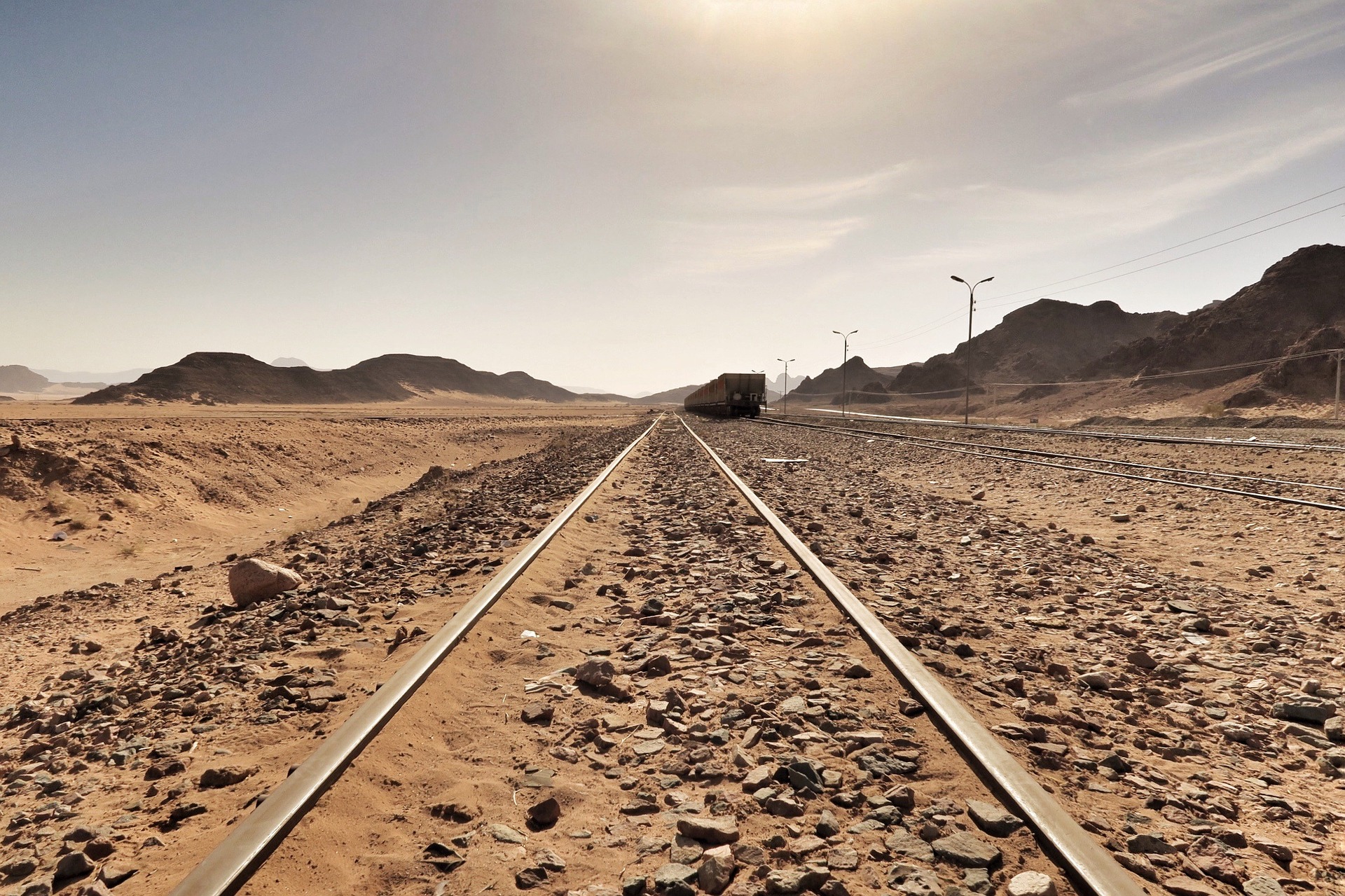A massive project underway in the Middle East could transform the region’s economy and transportation network. The Gulf Railway is a 2,117-kilometer railroad intended to link the six member states of the Gulf Cooperation Council (GCC): Oman, United Arab Emirates, Qatar, Bahrain, Saudi Arabia, and Kuwait. Here’s what you need to know about this sprawling megaproject.
What is the proposed route for the GCC Railway?
From Kuwait City, the railway will extend south along the coast of the Persian Gulf to Dammam, Saudi Arabia. From there, new causeways will carry one line to the island nation of Bahrain and then to Qatar, while the main leg will continue south from Dammam into the UAE, still hugging the coast for much of the journey. The endpoint for the GCC Railway is Muscat, the capital of Oman.
While some individual segments of the railway are complete, the entire line is far from finished. When the project is complete, Saudi Arabia will oversee the largest segment. Of the 2,117-km line, 663 km of track will run through the Kingdom.
What is the current state of rail transport in the Gulf?
In the Gulf, rail transport is witnessing something of a Renaissance. For much of the 20th century, building railroads was not a priority in the region. One exception was the Hejaz Rail Link, which was built by the Ottoman Empire to carry passengers on pilgrimages from Damascus, Syria, to the holy city of Medina, Saudi Arabia. However, the tracks were damaged during World War I, and the Ottoman Empire collapsed shortly thereafter in 1920. Smaller sections in Jordan and Syria remained in operation, although the entire linked network was defunct.
In the second half of the 20th century, Gulf countries began to develop their domestic railroads. Still, as recently as 2010, only Saudi Arabia had a significant rail network for the transport of freight cargo.
It’s a different story today. The value of proposed and active rail projects across the Middle East now totals $352 billion. Aside from the GCC Railway, rapid transit systems are being built to serve the metropolitan areas of Doha, Qatar, and Jeddah and Riyadh, Saudi Arabia. Dubai’s metro opened less than a decade ago, in 2009, and the government recently secured a $1.1 billion loan to expand the system.
How much will the GCC Railway cost?
Each country is responsible for financing and constructing the portion of the railway within its boundaries. Overall, the cost is estimated at about $200 billion. However, the total amount could be more, as many segments of the project are still in the planning stages.
What are the benefits?
The new railway will be a boon for freight transportation in the Gulf states. At present, heavy trucks transport much of the overland freight in the region, although at long distances trucks are inefficient, expensive, and prone to accidents. In contrast, a freight train can carry the load of 50 heavy trucks—about 1,000 tons of cargo—and therefore free up space on highways and local roads. Trains also use 50% to 60% less energy than road transport, and transporting freight via train can reduce shipping costs by as much as 30%.
Travelers could benefit, too. For example, the UAE’s domestic Etihad Rail network, which will connect to the larger GCC Railway, will offer passenger service between the big cities in the UAE, including Dubai and Abu Dhabi. These trains may one day carry up to 16 million passengers each year, providing a more comfortable travel experience that will offer a direct and seamless connection to airports and other modes of transportation. In the extremely hot temperatures of the Gulf, this is an important benefit. Walking outside in the sweltering summer heat to transfer from a car to a bus, for example, can quickly become unbearable.
Overall, GCC members are investing in the railway because of the anticipated economic benefits. An integrated rail network could improve logistics and supply chains for manufacturers across the Middle East by offering cost savings and greater flexibility.
What are some of the challenges?
The inhospitable desert terrain poses one of the biggest challenges to the GCC Rail project. The climate is forbiddingly hot, and the fine, loose sands of the desert do not provide a solid foundation on which to lay down tracks. Other difficult terrain includes the mountainous landscape between Muscat, Oman, and the country’s border with the UAE to the west.
In addition, there’s the challenge of coordination and compromise—something that is inherent in a massive infrastructure project that spans international boundaries. Although the Gulf States have much in common, there are still ideological and social differences that can make agreement and compromise difficult.
What’s the timeline for completion?
In September 2017, the Gulf Cooperation Council committee of transport ministers postponed work on the project until 2021. However, Gulf Business reported in October that the UAE’s infrastructure minister expected the project to be operational by 2021 despite the many setbacks that it has encountered. Falling prices for crude oil—the foundation of many Gulf economies—have constrained budgets, while disagreements and a lack of clarity have also caused delays. For example, tensions between Bahrain and Qatar have escalated in recent years, and the proposed causeway between the two countries is effectively on hold.

